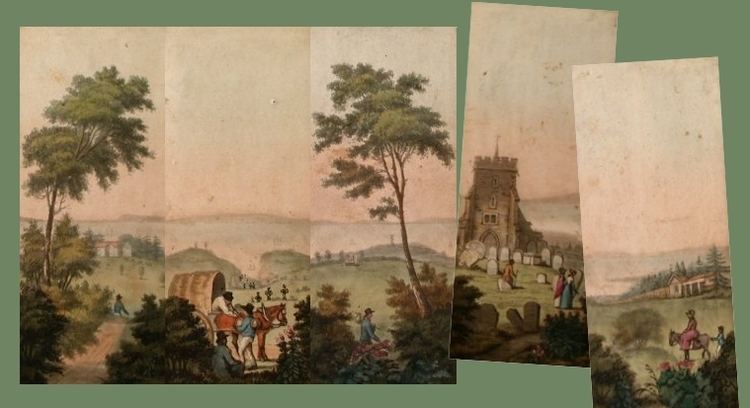 | ||
Myriorama originally meant a set of illustrated cards which 19th century children could arrange and re-arrange, forming different pictures. Later in the century the name was also applied to shows using a sequence of impressive visual effects to entertain and inform an audience. The word myriorama was invented to mean myriad pictures, following the model of panorama, diorama, cosmorama and other novelties. These were all part of a wider interest in viewing landscape as panorama, and in new ways of presenting "spectacular" scenes.
The early myrioramas were cards with people, buildings, and other images on compatible backgrounds, and could be laid out in any order, allowing a child to create a variety of imaginary landscapes. Jean-Pierre Brès, a French children's writer, published an early version which he described as a polyoptic picture (tableau polyoptique) in the early 19th century, and John Clark of London took up the idea and designed a set of cards he called a myriorama. Clark's "second series" myriorama, an "Italian landscape", was produced in 1824, the same year as a similar set of English cards called a panoramacopia created by drawing teacher T.T.Dales. Reproductions of cards from the period are on sale today with other "traditional toys". Various contemporary artists have used the idea as inspiration for work they have named myriorama.
Later in the 19th century, the term "Myriorama" was used by the Poole Brothers to describe their popular moving panoramas; for a history of these, see the entry on Moving Panorama.
